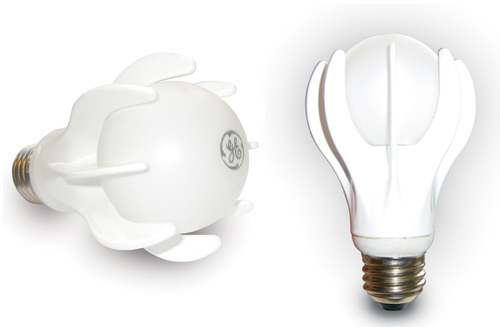LED Replacement Light Bulb
 GE have announced the development of an LED light bulb as a replacement for a standard incandescent light bulb. From the GE press release:
GE have announced the development of an LED light bulb as a replacement for a standard incandescent light bulb. From the GE press release:
- The inventor of the first visible light-emitting diode makes history again this year as it begins to show customers a 40-watt replacement GE Energy Smart® LED bulb available later this year or early 2011. GE Lighting's new LED bulb is expected to consume just 9 watts, provide a 77 percent energy savings and produce nearly the same light output as a 40-watt incandescent bulb, while lasting more than 25 times as long.
The LED bulb is designed to imitate the common features (including brightness and lighting angles) of a conventional incandescent bulb. Other benefit are that it does not contain mercury and offers a reduced fire risk due to the lower heat cast off.
The only negative is the anticipated price of 40 to 50 USD.
External Link